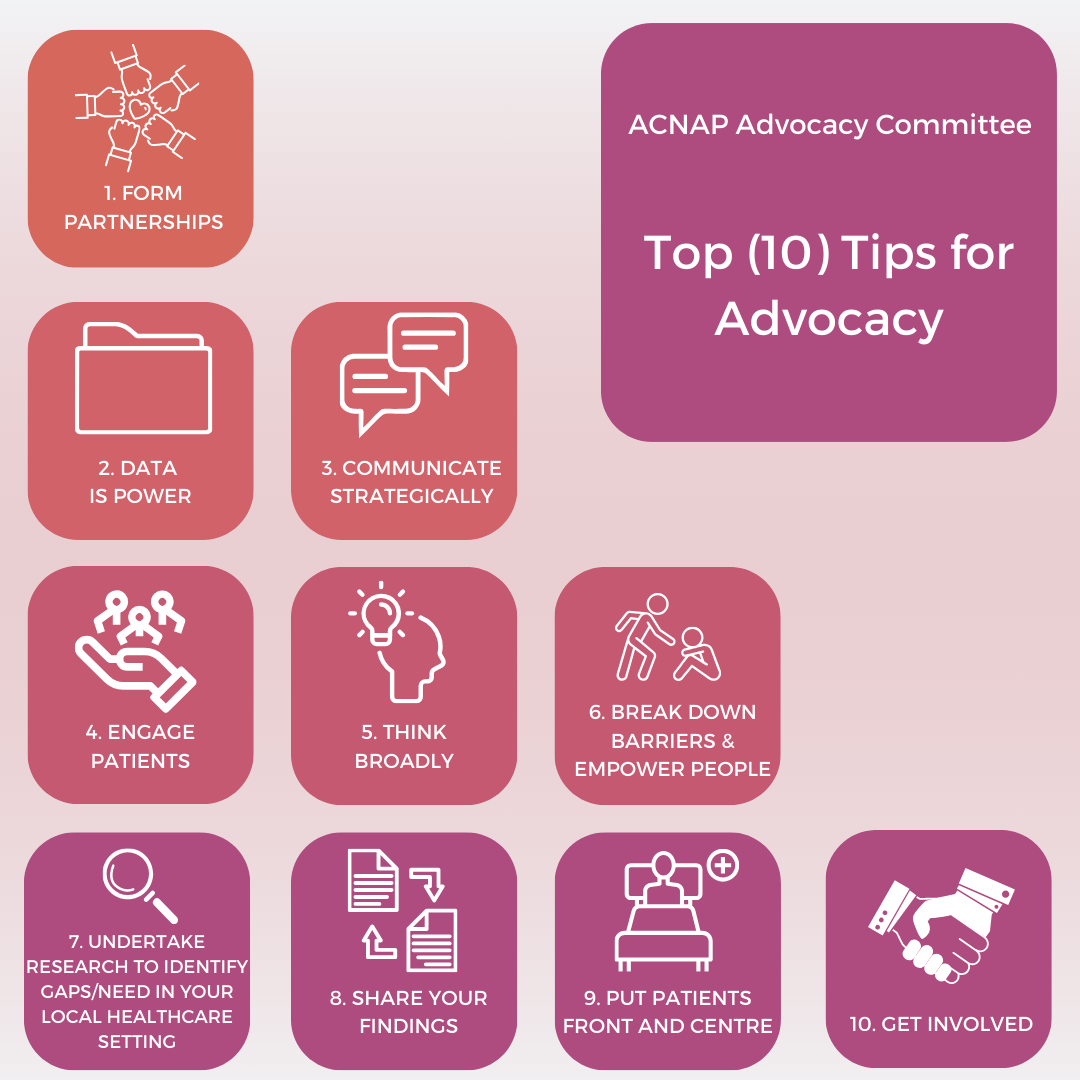We recently published an editorial1 seeking to define healthcare advocacy across categories, domains and activities. Following on from this editorial we have compiled our top 10 tips for nurses, allied health professionals, researchers and others involved in cardiovascular health to engage in advocacy activities.
As a healthcare professional, you have the potential to influence change whether it be in your own local health care setting, community or at a national policy level. Through collective action with key stakeholders such as patients and their families, health care professional colleagues, local communities and policymakers, we can use our voice to advocate for evidence-based measures to reduce the burden of cardiovascular disease2.
We acknowledge there are different levels of advocacy, and so cardiovascular healthcare professionals and researchers are encouraged use the tips that are most relevant to them.

Graphics made by Associate Professor Michal Czapla (Poland).
Policy making and funding
1. Form partnerships: Know who the decisionmakers are in your healthcare setting (for example senior management) or country and work together to ensure CVD is prioritised and appropriately funded and resourced.
2. Data is power: Use relevant data, facts and figures from a variety of sources to identify key gaps, likely benefits and to drive service improvement and investment. This may occur at different levels (local, regional, national).
3. Communicate strategically: Be clear on your message and tailor it to your audience (for example, clinical and/or policy decision makers), keeping it brief and succinct. Where relevant, engage the press and use social media to communicate for wider impact and reach.
Health and social care
4. Engage patients: The patient voice is a powerful tool in advocacy. Healthcare professionals need to actively listen to patients and ensure patent stories are heard. Personal stories can be persuasive and can influence and motivate change.
5. Think broadly: Healthcare professionals in clinical settings can advocate for the needs of patients, colleagues and the broader healthcare system.
6. Break down barriers & empower people: Identify the key barriers to advocacy and reform and work collaboratively on reducing and eliminating these barriers. For example, healthcare professionals are sometimes fearful of speaking up for fear of compromising their position and their career. Organisations are encouraged to develop a culture of openness and to provide training and support to empower healthcare professionals to engage in advocacy.
Research and education
7. Undertake research to identify gaps/need in your local healthcare setting: Conduct and contribute to research/auditing of healthcare data to assess effectiveness of current services/treatment and to identify CVD priorities in terms of advocacy.
8. Share your findings: Ensure results of research, audits and quality improvement initiatives are disseminated widely through a variety of channels to facilitate education, exchange of best practice ideas and to inform healthcare policy.
9. Put patients front and centre: Involve patients across all stages of the research cycle including setting research priorities, study design, participation and communication of findings.
Engagement
10. Get involved: Link with patient, national societies and advocacy organisations in your country and JOIN ACNAP to engage and hear more about our work.
These tips are informed by the World Heart Federation Advocacy Toolkit and the International Council of Cardiovascular Prevention and Rehabilitation Advocacy Toolkit.


 Our mission: To reduce the burden of cardiovascular disease.
Our mission: To reduce the burden of cardiovascular disease.